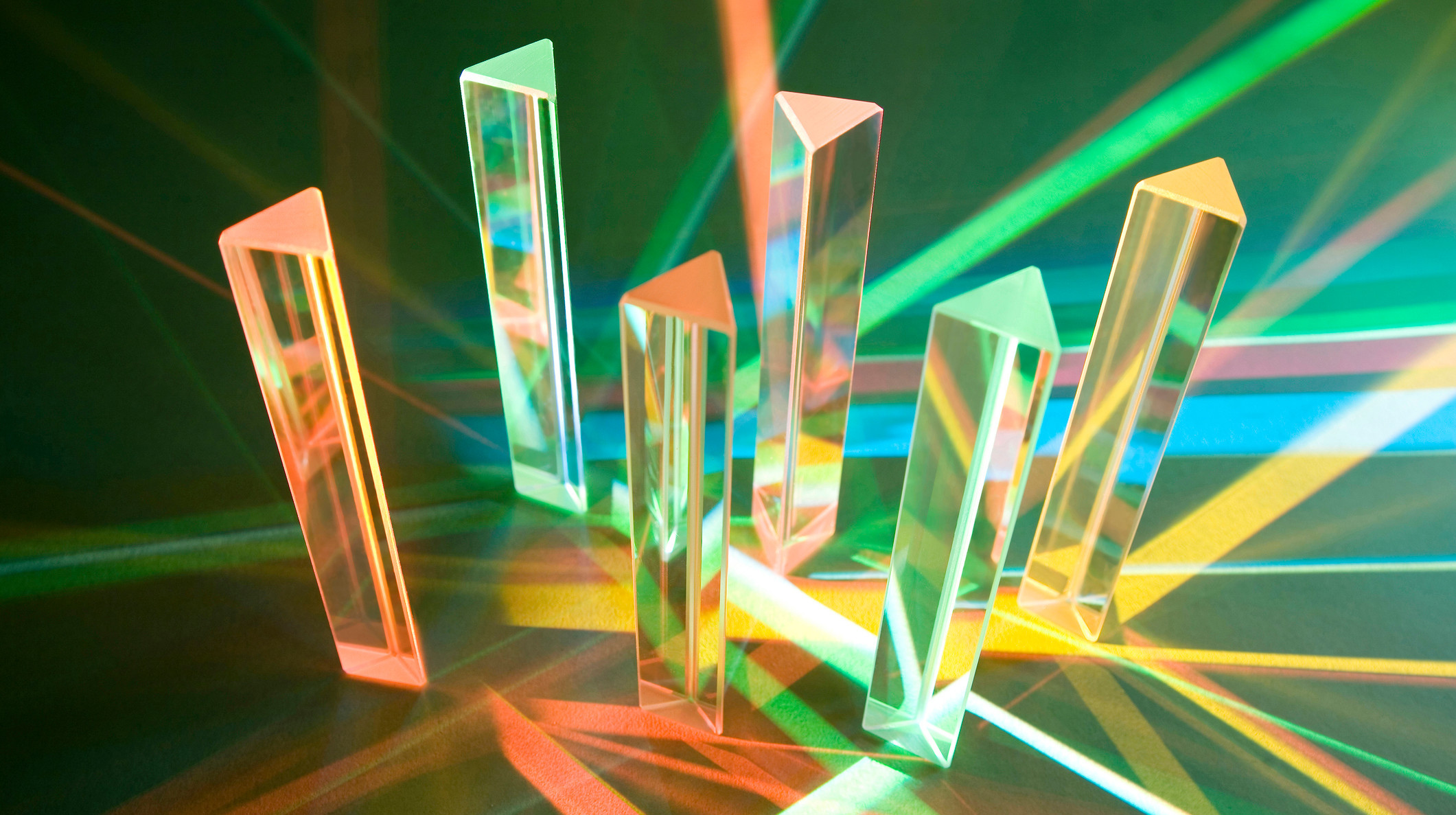Last Call: Shiny Rainbow Chocolate Remains A Beautiful Mystery
After 3 p.m. on a Monday is probably not the best time to dive headfirst into the rabbit hole that is Physicist Twitter. Or maybe it's not physics; maybe it's optics. Or....chemistry? I've already buried the lede. Just take a look at this mesmerizing iridescent rainbow chocolate:
I'm finally getting some decent results producing 100%-edible iridescent tempered chocolate. The colors are from the chocolate (not any ingredient or coating) diffracting light after being forcefully molded onto a diffraction grating in vacuum. pic.twitter.com/6wpbsIKh5C
— samy k͓͓͓͓͓͓͓͓͓͓͓͓͓͓͓͓͓͓͓amkar͛͛͛͛͛͛͛͛͛͛͛͛͛͛͛͛͛͛͛͛ (@samykamkar) May 9, 2020
A few things here. Firstly, Samy Kamkar is not a confectioner; he's a former wunderkind hacker who's become a multi-hyphenate tech and security entrepreneur. I don't understand the Wikipedia summary of anything he's ever done. But forcefully molding chocolate onto a diffraction grating in a vacuum might just be something a computer whiz does for fun.
Secondly: What? What does any of this mean? All I need to know is, in the common parlance, Just how'd that chocolate get all shiny and pretty? When Kamkar is asked something along those lines from other Twitter users, suffice it to say that his explanation does not clear things up.
After failures attempting lasing gratings, finally designed mold in @adskFusion360, laser cut acrylic plates (variable thickness) w/@glowforge, turned rods w/Grizzly G0765, CNCd diffraction grating w/@Inventables Carvey, tempered+pressure injected chocolate, pulled vacuum @ 4torr pic.twitter.com/pKsS1tuV7e
— samy k͓͓͓͓͓͓͓͓͓͓͓͓͓͓͓͓͓͓͓amkar͛͛͛͛͛͛͛͛͛͛͛͛͛͛͛͛͛͛͛͛ (@samykamkar) May 11, 2020
This appears to be some sort of answer to the question "Why is the chocolate pretty," but I'd have to do some serious research to confirm that hypothesis. Again, it is Monday and the workday is nearly done. Another reader mirrored my weariness with a request for a more 101-level walkthrough (clusterfunks, let's hang out), and Kamkar politely obliged:
You're not an idiot! Mainly I made some chocolate and while it was warm, injected it onto diffraction grating. The chocolate solidified with the grating pattern. The grating diffracts/splits light which is still magic (same as in diffraction glasses). https://t.co/ylVXWlVWbl pic.twitter.com/rXxbO3bgXv
— samy k͓͓͓͓͓͓͓͓͓͓͓͓͓͓͓͓͓͓͓amkar͛͛͛͛͛͛͛͛͛͛͛͛͛͛͛͛͛͛͛͛ (@samykamkar) May 9, 2020
Okay, so I'm inching closer to understanding this, but only in the way that you get closer and closer to remembering a dream you had. And after Kamkar confirmed to another user that the iridescence only holds onto the surface of cold chocolate, my grasp on the food science slipped farther back toward square one.
But that's okay! Because at the end of the day, that chocolate looks more beautiful than I knew possible. And reading through the replies makes me feel like I'm absorbing secondhand knowledge in areas I've never studied, picking up stray threads from my fuzzy memories of high school science class and delighting in the fact that there's so much left to learn. If we can learn it from chocolate, all the better.
That said, if anyone can explain the phenomenon of the shiny chocolate to me and clusterfunks, please, we beg you, enlighten us. I leave you on this Monday afternoon with the wise words of Some Person On Twitter:
Life would suck without nerds.
— CatalyticInsights🛡️ (@GlobalCryptoIn) May 9, 2020
